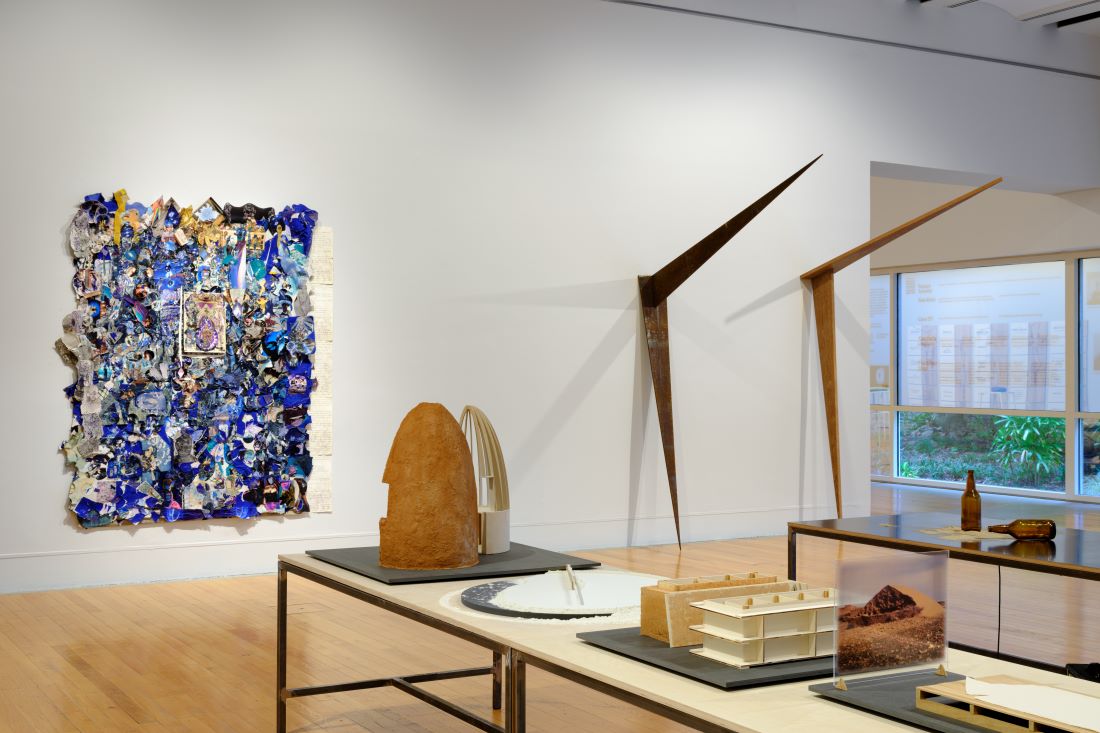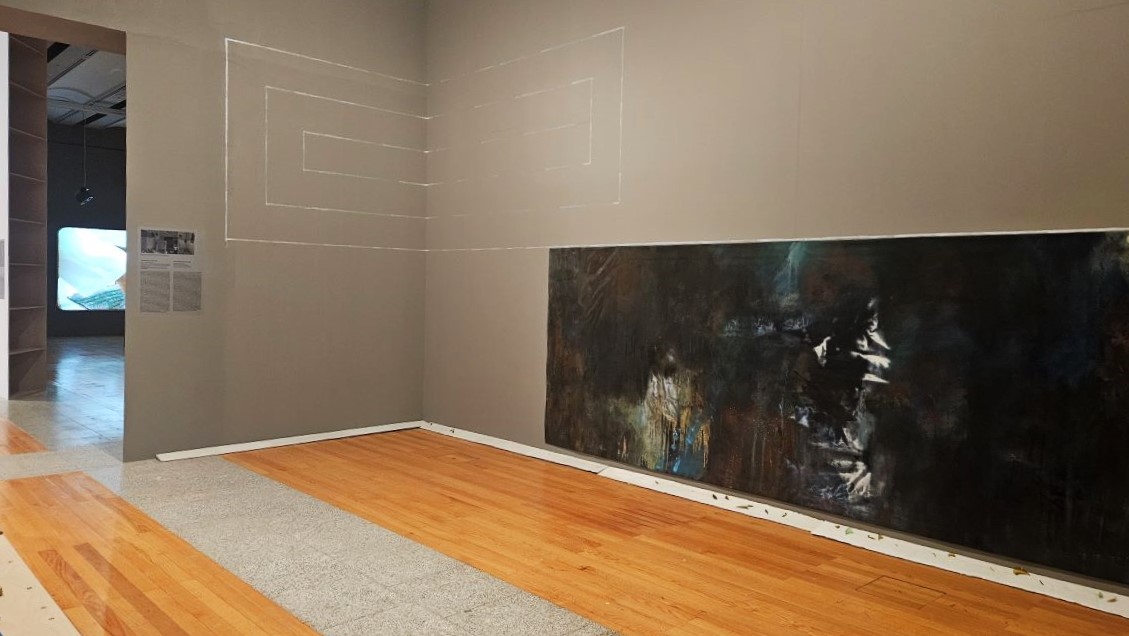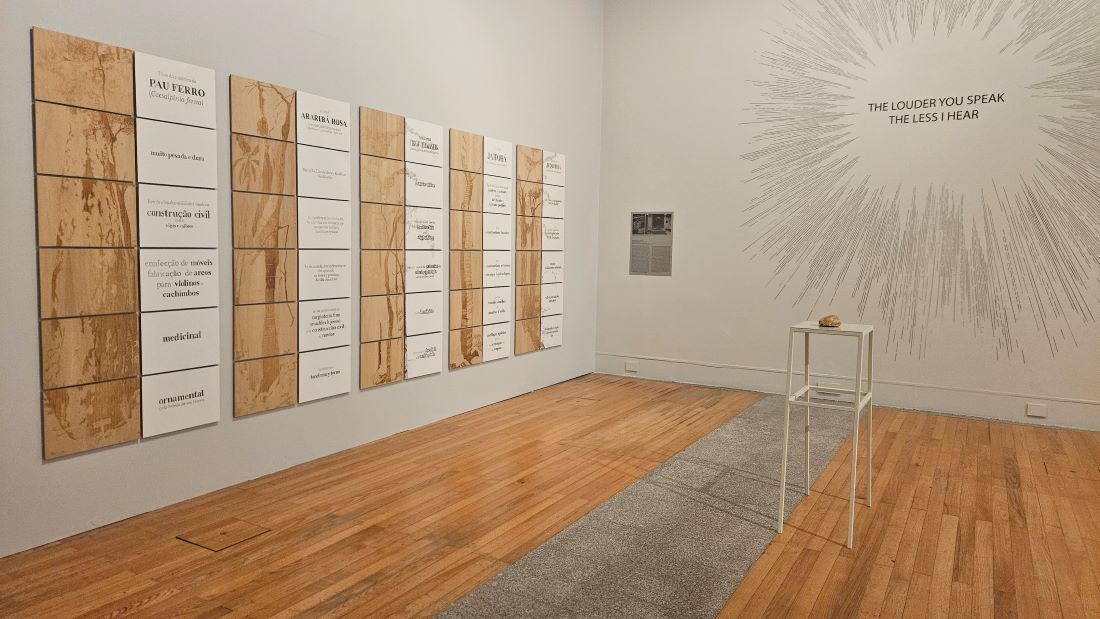Exhibition
The time of the studios overlooking the avenue
At MAC/CCB, "Avenida 211" evokes a unique experience in contemporary Portuguese art.

Between 2006 and 2014, a truly unique experience took place on Lisbon's most prestigious avenue. A group of artists had at their disposal a building on Avenida da Liberdade belonging to Banco Espírito Santo. Through dozens of works of art and multiple records, Avenida 211 - An Artists' Space in Lisbon tells the story of that time.
Imagine 5,400 square meters in the heart of Avenida da Liberdade, spread over four floors, a basement and an attic. In 2006, it became possible to occupy all this space for artistic purposes thanks to an initiative by sculptor and civil engineer António Bolota, to whom Banco Espírito Santo, owner of number 211 on that avenue, entrusted the management of the entire property so that he could launch what would become, in his own words, “a unique and singular collaborative experience in Portugal.”
The initial goal was to provide workspaces for artists. Besides Bolota himself, the first to “receive the keys” were Virgínia Mota, Daniel Barroca and Francisco Tropa, but until 2014, the year the bank that owned the property collapsed, more than four dozen artists came to “reside” on Avenida da Liberdade. This is without counting the hundreds who passed through there as part of various curatorial projects, ranging from visual and plastic arts to music or performance, with collectives such as The Barber Shop, Projecto Teatral and Parkour being particularly noteworthy.

As Nuria Enguita, who curates the exhibition Avenida 211 – An Artists’ Space in Lisbon, alongside Marta Mestre, recalls, “that building was a place for experimentation and thought, and for almost a decade it functioned as a driving force for artistic development in the city of Lisbon.” Between the oldest resident artist, the painter and sculptor Pedro Morais, and the youngest, Diogo Bolota, number 211 on Avenida da Liberdade Between the oldest of the resident artists, painter and sculptor Pedro Morais, and the youngest, Diogo Bolota, number 211 on Avenida da Liberdade has housed several generations of creators in its rooms. In that space, the recently deceased João Queiroz produced the marvelous sets for João Botelho’s film adaptation of Eça de Queiroz’s Os Maias; Gabriela Albergaria conducted her research on the Oxford Botanic Garden, which led to the publication of Hither and Thither, a mixture of academic guide and artist’s book; and Pedro Barateiro painted from the anti-troika demonstrations marching Avenida da Liberdade. Furthermore, Avenida 211 was the first home of Kunsthalle Lissabon, and the city remembers the music and performance events organized by Filho Único, “which brought together more than 700 people,” including memorable concerts by Norberto Lobo, Kimi Djabaté and Tó Trips.
“Avenida provided a different experience for each artist, but the nature of the project was collaborative, which meant that the space was very much shared,” recalls Bolota. Having a property on what is perhaps the most prestigious street in the city, “without having to pay rent, water or electricity,” ended up providing all the creators who passed through there “a very fertile period for artistic production.”

Until April 2026, at MAC/CCB, through works by around 60 artists who crossed paths at 211 Avenida da Liberdade, visitors can explore the yearsthat preceded the financialization of the city, which puts the square meter in that area at the “modest” figure of €9,285 at current values. To emphasize this, and to affirm that everything we will see would be impossible today, the exhibition begins precisely with a square meter marked out on the floor and, inside it, the current price charged.
After a first room offers a glimpse of the marvelous 19th-century building on the corner of Rua Rosa Araújo, following the research carried out by Giorgia Casara and Sara de Chiara, the visitor follows a more or less arbitrary route, since there is no set itinerary for seeing Avenida 211. There are four more rooms whose discourse results from a “dialogue with the artists and the exploration of the material”. Essentially, as Enguita points out, the aim was to convey in this exhibition the spirit of “open space, a mobile ecosystem of people coming and going,” which defined life in the building until just over a decade ago.
As António Bolota is keen to point out, “10 years after the Avenida closed, I see in this exhibition the same freedom that we all shared in that space.” As if we could still witness creators like Pedro Henriques, Carla Filipe, Diogo Evangelista, Joana Escoval or Pedro Tropa watching life go by from the building’s windows, in a time when it was possible to have artists’ studios overlooking the avenue.